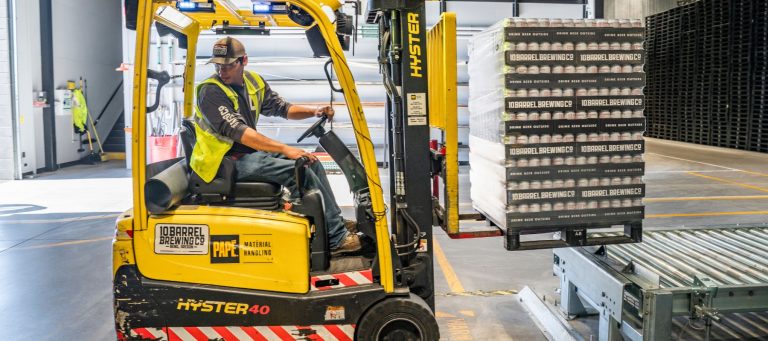New health and safety updates from Safe Work Australia
National Safe Work Month 2022 – theme and campaign kit released
The theme for National Safe Work Month 2022 is Know safety, work safely – encouraging everyone to make health and safety in the workplace a priority. The official campaign launch is 1 October. View the campaign details and download the kit here.
New guidance: Japanese encephalitis: duties under the model WHS Laws
Japanese encephalitis has been detected in parts of South-Eastern Queensland, New South Wales, Northern Territory, Victoria and South Australia.
Japanese encephalitis spreads when a human is bitten by a mosquito that has previously bitten a pig or a wild water bird infected with the virus.
If your business or your workers are in an area where Japanese encephalitis is present, find out what you can do as a PCBU to minimise the risks associated with Japanese encephalitis and keep your workers safe.
View the guidance here.
New fact sheet: WHS Duties in a Contractual Chain
Safe Work Australia has published WHS information for PCBUs and workers who are working as part of a contractual chain.
The fact sheet provides an understanding of what a PCBU is and explains that an individual contractor can be both a PCBU and a worker. Understanding this will help PCBUs within a contractual chain uphold their WHS obligations and consult, cooperate and coordinate activities with all other PCBUs with whom they share a duty.
View the WHS Duties in a Contractual Chain fact sheet.
ACT
OHS Codes of Practice: https://www.worksafe.act.gov.au/laws-and-compliance/codes-of-practice
NSW
New standard: Scaffolding Industry Safety Standard launched to stop workplace deaths
There is a new Scaffolding Industry Safety Standard for work sites in NSW, which provides a clear guide to prevent scaffolding-related injuries and deaths.
The Safety Standard details practical management tools to principal contractors, scaffolders, engineers, and other parties involved in scaffolding work, ensuring best practice for the scaffolding industry.
View the scaffolding industry safety standard here.
NT
OHS Codes of Practice: https://worksafe.nt.gov.au/forms-and-resources/codes-of-practice
QLD
New safety laws proposed for quad bikes and side-by-sides
The Queensland Government is investigating proposed new regulations to improve safety for people operating quad bikes and side-by-side vehicles (SSVs) in a workplace.
Feedback will guide the development of the proposed safety regulations under the Work Health and Safety Regulation 2011.
Read more about the proposed legislation here.
SA
OHS Codes of Practice: https://www.safework.sa.gov.au/resources/codes-of-practice
VIC
New Compliance Code: Lead
WorkSafe’s first Lead Compliance Code was released earlier this year and provides practical guidance for controlling risks associated with lead exposure in the workplace, including requirements for lead-risk work and lead processes.
Lead processes include working with lead, lead alloys and dry lead compounds, and can involve a range of activities, such as radiator repairs, dismantling lead-based batteries, working with lead-based paint, manufacturing ammunition and explosives, or working with pewter, lead pigments or ceramic glazes.
If your work involves lead processes or lead-risk work, you must comply with specific duties and obligations under the:
- Occupational Health and Safety Act 2004 (OHS Act)
- Occupational Health and Safety Regulations 2017 (OHS Regulations).
This guidance is particularly relevant if you are an employer or self-employed person who works with lead. It is also relevant for employees and health and safety representatives who work with lead.
The code includes information on:
- what lead is and how it gets into the body
- the health risks of working with lead
- how levels of lead in the body are measured
- what a lead process is
- what lead-risk work is
- duties for employers and employees
- how to control the risk of exposure to lead
- when health monitoring is required and what it involves
Learn more about the Compliance Code: Lead.
New duties for high risk crystalline silica work in force
Crystalline silica is contained in products such as engineered stone, ceramic tiles, concrete, bricks and marble. High-risk crystalline silica work can create hazardous dust which, if inhaled, can cause deadly lung and respiratory diseases, such as silicosis.
Under the changes, businesses working with silica must now identify and document high-risk crystalline silica work and the risk control measures they have in place.
The new duties took effect from 15 May and will affect businesses in a range of industries, including quarrying, construction and tunnelling.
Employers are now also required to provide safety training and instruction to any employees and information to any job applicants who may engage in high-risk crystalline silica work.
Read more about the new duties here.
WA
OHS Codes of Practice: https://www.commerce.wa.gov.au/worksafe/approved-codes-practice






